Outcome Example of Bio-oriented Technology Research Advancement Institution
Issued on September 15, 2020
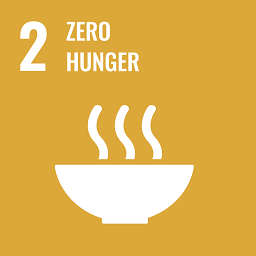
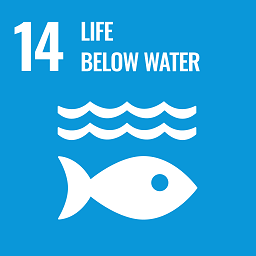
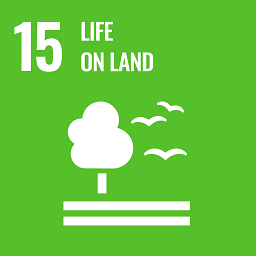
Unutilized seaweeds are used as feeds for sea urchins and sea cucumbers
In the kelp harvesting spot on the east coast of Hokkaido, various seaweeds that are not utilized and have no commercial value, such as Costaria costata, Alaria praelonga and Cystoseira hakodatensis (Image 1) grow thickly. The fishermen suffer from these seaweeds and have been seeking solutions because they prevent kelp from growing. On the other hand, the "rocky-shore denudation" phenomenon has spread into the seas of various regions, where it is difficult for seaweeds to grow (Image 2). In such regions where seaweeds scarcely grow, sea urchins with thin gonads are increasing in number, which is also a problem, because only the gonads are the edible sections (Image 3). Furthermore, the sea urchins hatcheries and farms struggle with a shortage of seaweeds to feed sea urchins. Also the sea cucumber hatcheries have a problem that special feed for juvenile sea cucumbers has still not been developed. Against this background, a project team comprising four organizations, Japan Fisheries Research and Education Agency, Hokkaido Research Organization, Hokkaido Government Office, and Hokkaido Aquaculture Promotion Corporation, developed methods to process the unutilized seaweeds as feeds for sea urchins and sea cucumbers.
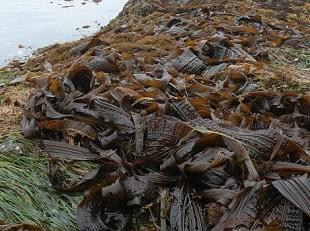 |
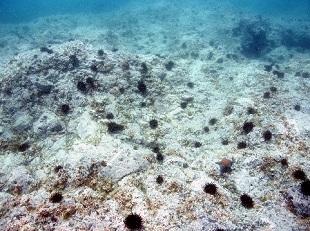 |
| Image 1: Costaria costata with no commercial value(Supplied by Hokkaido Research Organization) | Image 2: "Rocky-shore denudation" phenomenon that disables seaweeds to grow(Supplied by Hokkaido Research Organization) |
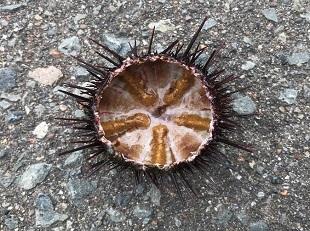
(Supplied by Japan Fisheries Research and Education Agency)
Debut of good-taste sea urchins fed with a combination of blanched Costaria costata and Chinese cabbage
|
When Costaria, a seaweed, is used for feed, how should it be processed to grow sea urchins that are healthy and tasteful? Dr. Tatsuya Unuma, a senior researcher of the subarctic marine environment group in Japan Fisheries Research and Education Agency, and his colleagues gave seven types of fresh or processed C. costata to short-spined sea urchins for four weeks. The seven types were; fresh, salted, frozen, dried, blanched, blanched & frozen, and blanched & dried. In the blanching step, C. costata was immersed in boiling seawater for 30 s. The result showed that the sea urchins fed with three types of blanched C. costata had larger and better gonads than those fed with the other four types of non-blanched C. costata including fresh one. |
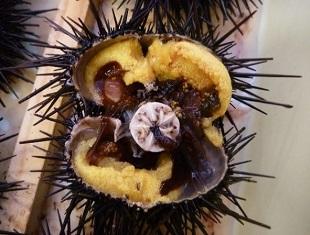 Image 4:Sea urchin with large gonads and good appearance(Supplied by Hokkaido Research Organization) |
However, the gonads taste of sea urchins usually becomes bitter when they are raised on preserved (not alive) seaweeds. Actually, the sea urchins fed with blanched C. costata tasted bitter.
To address this issue, blanched & dried C. costata was given to Northern sea urchins for six weeks, followed by fresh Chinese cabbage for three weeks. These sea urchins had larger and better gonads. They were no longer bitter; they even tasted sweet. (Image 4).
Fast growth of juvenile sea cucumbers fed with powdered seaweeds and diatomite
|
To develop feeds for sea cucumbers, unutilized seaweeds (Alaria praelonga, C. costata, Sargassum thunbergii, and Ulva pertusa) were powdered after drying, and given to juvenile sea cucumbers (Image 5) for four weeks. They grew better than those fed with commonly used imported seaweed powder. Sea cucumbers have no teeth and often accumulate a large amount of mud and sand in the digestive tract. Considering the above feature, diatomite was added to the powdered C. costata at the rates ranging from 20% to 90%, and the mixture was given to juvenile sea cucumbers for four weeks. The result showed that the higher the composition rate of diatomite, the faster the juveniles grew. |
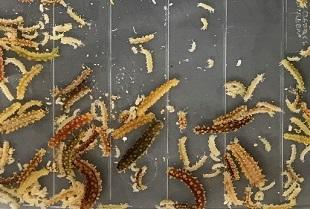
Image 5: Juvenile sea cucumbers eating seaweed powder(Supplied by Japan Fisheries Research and Education Agency) |
|
Finally, their efforts in carrying out this research bore fruit. In September 2019, "Namako no Shushoku (Staple Food for Sea Cucumbers)" as the feed for juvenile sea cucumbers (Image 6), and in June 2020, "Namako no Rinyuushoku (Baby Food for Sea Cucumbers)" as the feed for juvenile sea cumbers just after settlement were placed on the market. YS FOODS, a local company (Mori-machi, Hokkaido), which operates a fish processing business, produces and sells these products. Both feeds are easy to use because the users simply add some seawater to the feed just before feeding. |
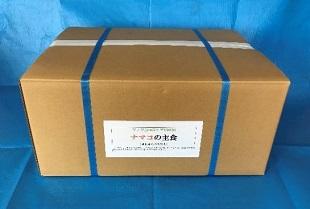 Image 6: Feed for juvenile sea cucumbers(Supplied by Japan Fisheries Research and Education Agency) |
Future challenge is to establish an effective harvesting system
It has been demonstrated that the unutilized seaweeds can be processed as good feeds for sea urchins and sea cucumbers. However, issues of efficient harvesting of unutilized seaweeds and transporting them from the fishing grounds to the factory where feeds are manufactured, remain unsolved. "Namako no Shushoku" and "Namako no Rinyuushoku" on the market are, to some extent, successful examples of the effective use of resources, because the seaweeds disposed of at seafood-products factories are used as their material. However, the ultimate goal of the present research project is to establish an efficient system to use all kinds of seaweeds more effectively, including the unutilized seaweeds harvested at fishing grounds.
On the main island of Japan, various seaweeds, such as Sargassum thunbergii and Ulva pertusa, have hardly been utilized. Therefore, the results of the present research are expected to be put into practice in other regions as well as in Hokkaido.
Project name
The special scheme project on advanced research and development for next-generation technology (Former agriculture, forestry, fisheries and food industry scientific technology research advancement institution (practical technology development stage))
Project period
FY 2015 to 2017
Title
Development and use of feeds for marine invertebrates using unutilized seaweeds as materials in the east coast of Hokkaido
Project research institutes
Regional Fisheries Research Laboratory, Japan Fisheries Research and Education Agency (Former Hokkaido Regional Fisheries Research Laboratory, etc.)
